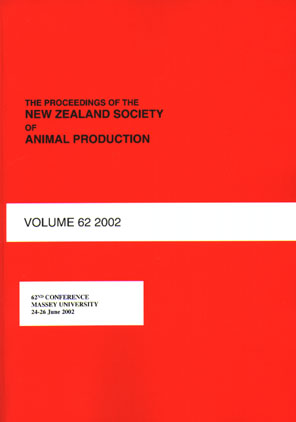Abstract
This trial was designed to test the hypothesis that increased faecal egg counts (FEC) of fleeceweight-selected (FW) lambs over control (C) lambs represented a decreased resistance to internal parasitism in FW lambs. Measurements were recorded over a 42 day period from late February 1991 using August-born lambs from the Massey University FW and C flocks. All lambs were drenched with ivermectin on day 0. Lambs of each sex and flock were randomly allocated within sire (4 per flock) to receive an albendazole controlled release capsule (+ALB). Ewes and rams were run separately. Midside wool growth, liveweight, and FEC were recorded, and estimates of dry matter intake were inferred from chromate analyses. The FW lambs had consistently higher FEC's than C lambs. Significant differences were observed by flock and ALB treatment in both wool production and liveweight gain, but no significant flock-by-ALB interaction were detected. Trends in production traits indicated that the superiority of FW lambs may have increased in situations where the development of adult worm burdens was continually suppressed. However, no clear evidence was found to show that FEC is a reliable indicator of a sheep's resistance to production losses arising out of internal parasitism.
Proceedings of the New Zealand Society of Animal Production, Volume 52, , 21-24, 1992
| Download Full PDF | BibTEX Citation | Endnote Citation | Search the Proceedings |

This work is licensed under a Creative Commons Attribution-NonCommercial-NoDerivatives 4.0 International License.

